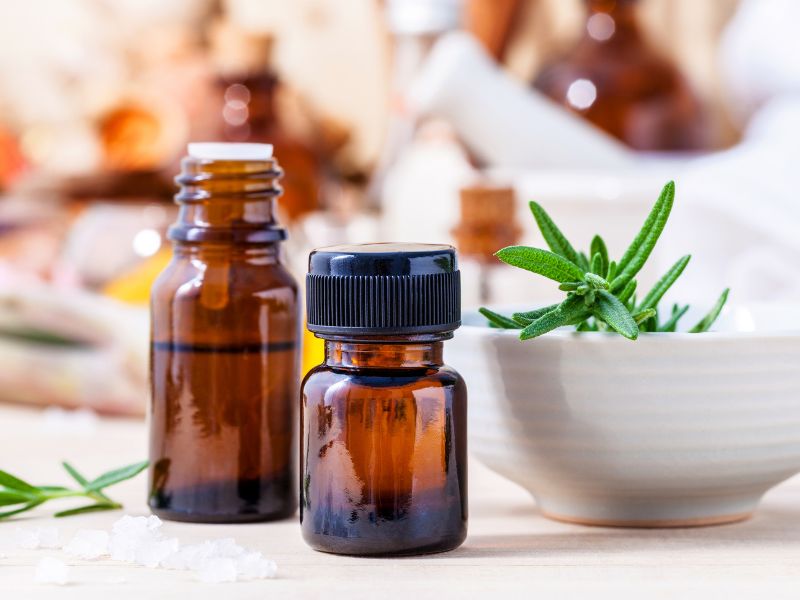Spring season is centered around growth and change. Life has been in its dormant winter season phase, building potential energy. And now is the time to start using it. Did you craft plans and dreams for the new year during the cold months, but now figuring out how to implement those plans and dreams seems difficult and even frustrating? Use the budding changes and energy of spring to fuel you as you try my top five tips to revive your holistic health habits this spring:
1. Set Your Intentions and Goals
My first step for a holistic “spring cleaning” is to begin by gaining some mental clarity. In order to create the changes and growth we want to see, and accomplish the dreams and goals we built for this new year, we need to have a strategy.
In spring, we see all of nature budding new shoots of green growth, and we want to do the same. This is where holistic health perspectives and tools can help us refocus our efforts and support our minds and bodies for optimal wellness. The flip side of all the upward movement of spring is feelings of frustration and inadequacy when we can’t seem to make things happen. These feelings of frustration can be reinforced by common spring seasonal health imbalances such as inflammation, allergies, and slow digestion, coupled with winter weight.
Want to prevent this? Create a map. Two necessary points on a map are “where I want to go” and “where I am now.” Using these two points, you can figure out possible routes between the two.
Write down your primary goal for this spring. Then create daily, weekly, and monthly tasks to accomplish this goal. This is powerful for professional, personal, and health progress.
2. Move Daily
For a balanced holistic approach, support your mind, body, and spirit. Regular daily movement is important in the spring season; whether it is just a walk through the park to look at the new leaves and blossoms, or the beginning of a new hobby such a bicycling or rowing, or a new variation of your exercise routine.
When we generate ideas and have feelings about them, our natural follow through is physical action. In today’s modern society, there is an abundance of mental and emotion stimulation through sedentary activities and technology use. When we don’t give our physical body the opportunity to express the physical action side of the equation, this can lead to stagnation not only in our physical health but also in our mental/emotional lives as well.
3. Incorporate Spring Seasonal Foods
During the winter months, we usually eat higher amounts of animal fats, proteins, and carbohydrates. In the spring season, there is a shift to fresh, and even raw, seasonal fruits and vegetables, and minimal animal fats and grains. This relieves the liver from processing excess fats and carbohydrates, and simultaneously, stimulates the liver and metabolism. Traditionally, green foods are used to nourish the liver. Incorporate plenty of green spring seasonal foods: leeks, dandelion greens, radish greens, beet greens, asparagus, artichokes, cabbage, wheat and barley grass, and peas.
4. Drink Herb & Citrus-Infused Waters
With all of this mental, physical, and digestive stimulation, our bodies need elimination support. One of the primary vectors of elimination in the body is the kidneys, and the kidneys eliminate via the medium of water.
Drinking pure water and staying well hydrated can help promote elimination. But, during the spring months, I like to make cold-infused citrus herbal waters, and drink about 16 ounces a day. The rest of my daily water intake is plain water.
These gentle digestive and elimination tonics are both refreshing and useful. Using the whole citrus fruit, we have access to all of its nutrients and bioactive compounds. Citrus fruits (including their juices) such as lemon, sweet orange, and lime have been shown to have antioxidant effects and contain: phenols, flavonoids, reducing sugars (such as monosaccharides), steroids, terpenoids, and tannins.
Food and herbs with a sour flavor are used in traditional Chinese herbalism to stimulate or drain the liver, which in turn can also stimulate the kidneys. Citric acid is found in citrus juice, and is what gives citrus its classic sour taste. Beverages containing citric acid increase total volume of urine. By using a diluted maceration of citrus (recipe and directions below), we can gently access these types of benefits without the big glycemic index of pure fruit juice, or the precautions and possible adverse reactions of adding concentrated essential oils or extracts.
My basic recipe is the following:
Purified or distilled water: 1 gallon (I like to use a 1-gallon iced tea dispenser with a spigot)
Large piece of citrus fruit, sliced: 1 (or 2 small pieces of citrus fruit, sliced)
Fresh herb material, whole: ½ cup
Directions: Fill the water container; then place the citrus fruit and fresh herb in the water. Stir gently for one to two minutes; then place the lid on the container. Allow to sit overnight in the refrigerator.
My favorite springtime combinations are:
- Lemon and peppermint Mentha ×piperita (L.)
- Lime and cilantro Coriandrum sativum (L.)
- Sweet orange and spearmint Mentha spicata (L.)
These are my favorite combos; but I’d love to see yours. Post a comment with your recipe ideas!
5. Invest in Professional Guidance
While there are several gentle herbs that are safe for most people to incorporate into their spring wellness routine, if you are experiencing larger health imbalances or if your health challenges are greater in the spring, it is invaluable to have a consultation with your trained holistic health care provider.
Let your naturopath, acupuncturist, chiropractor, nutritionist, or herbalist help you design a personalized spring wellness plan to address your specific needs and safety precautions. Some health imbalances such as seasonal allergies, food sensitivities, digestive difficulties, and emotional troubles can require professional guidance and longer-term protocols for appropriate support.
This article is for informational purposes only. It is not intended to treat, diagnose, cure, or prevent disease. This article has not been reviewed by the FDA. Always consult with your primary care physician or naturopathic doctor before making any significant changes to your health and wellness routine.
Disclosure of Material Connection: I am a faculty member of American College of Healthcare Sciences (ACHS), the Institution that publishes this blog. However, all opinions are my own. This blog may contain affiliate links. I am disclosing this in accordance with the Federal Trade Commission’s 16 CFR, Part 255: “Guides Concerning the Use of Endorsements and Testimonials in Advertising.”
References:
Rodríguez-Roque, M.J., Rojas-Graü, M.A., Elez-Martínez, P., Martín-Belloso, O. (2013). Changes in vitamin C, phenolic, and carotenoid profiles throughout in vitro gastrointestinal digestion of a blended fruit juice. J Agric Food Chem. 61(8):1859-67. doi: 10.1021/jf3044204. Epub 2013 Feb 18.
Rauf, A., Uddin, G., Ali, J. (2014). Phytochemical analysis and radical scavenging profile of juices of Citrus sinensis, Citrus anrantifolia, and Citrus limonum. Org Med Chem Lett. 4:5. doi: 10.1186/2191-2858-4-5. eCollection, 2014.
Penniston, K.L., Nakada, S.Y., Holmes, R.P., & Assimos, D.G. (2008). Quantitative assessment of citric acid in lemon juice, lime juice, and commercially-available fruit juice products. J Endourol. (3):567-70. doi: 10.1089/end.2007.0304.
Foster-Powell, K., Holt, SHA., & Brand-Miller, JC. (2002). International table of glycemic index and glycemic load values: 2002. Am J Clin Nutr. 76(1): 5-56.
Jäger, S., Beffert, M., Hoppe, K., Nadberezny, D., Frank, B., & Scheffler, A. (2011). Preparation of Herbal Tea as Infusion or by Maceration at Room Temperature Using Mistletoe Tea as an Example. Scientia Pharmaceutica, 79(1), 145–155. http://doi.org/10.3797/scipharm.1006-06




